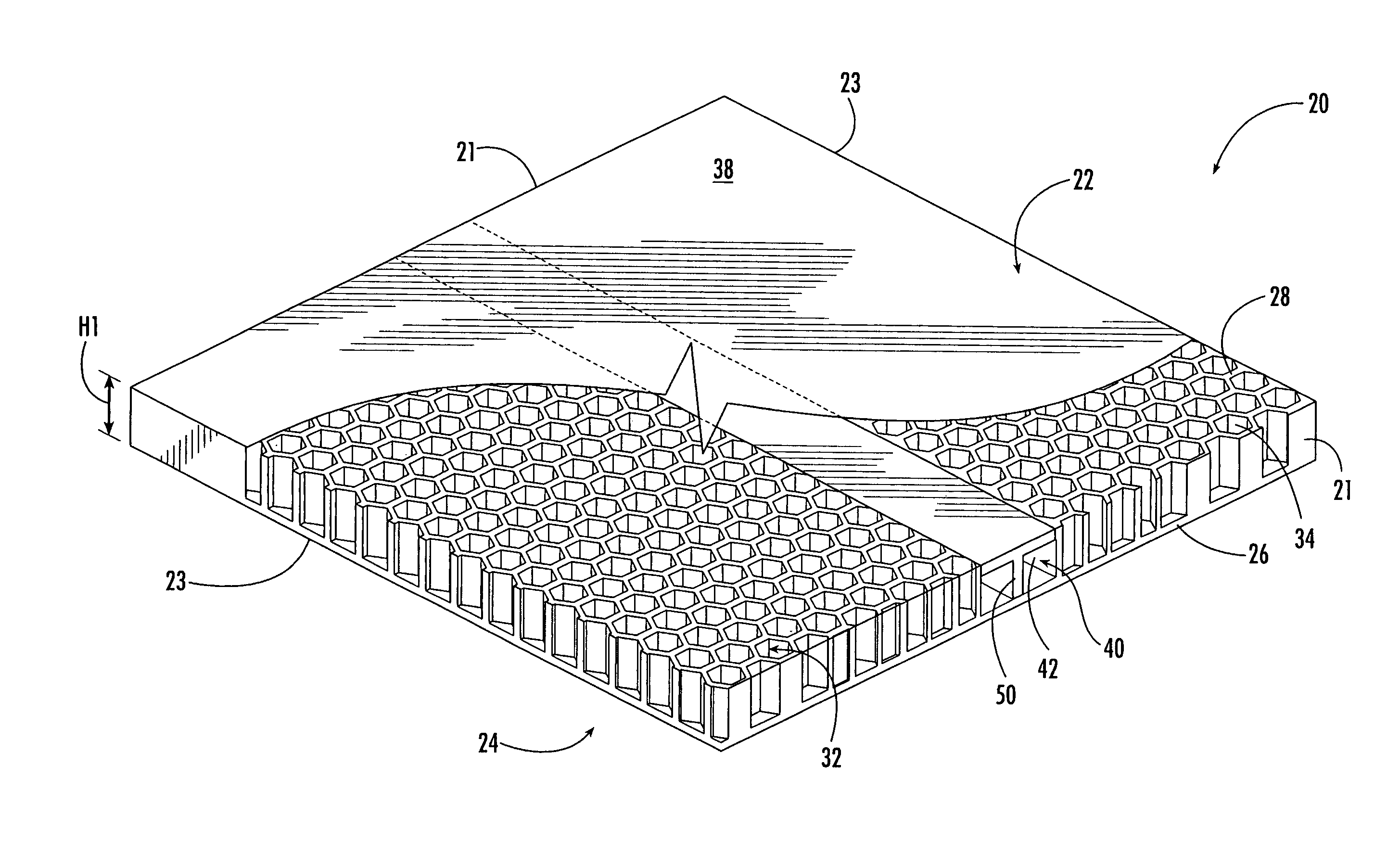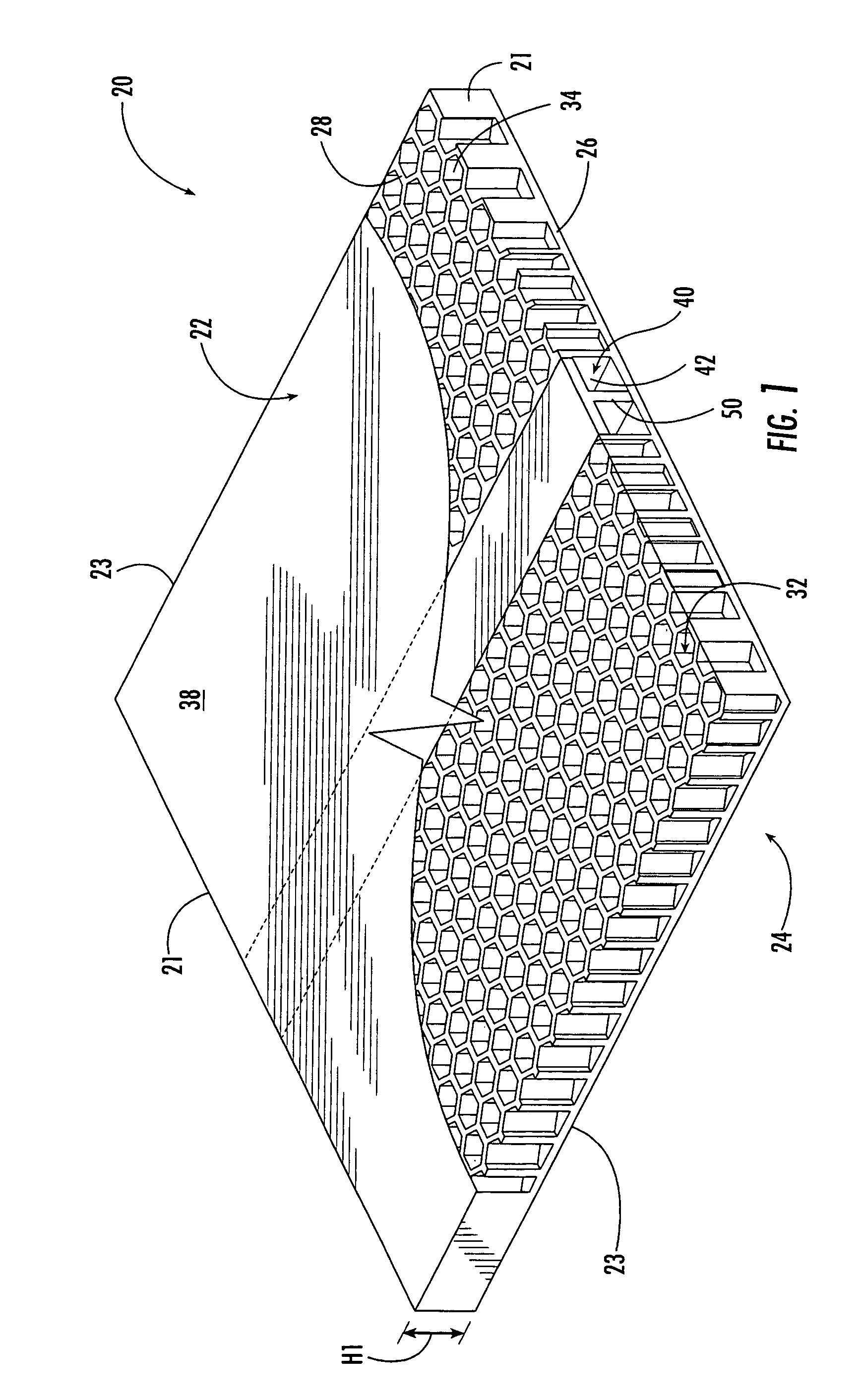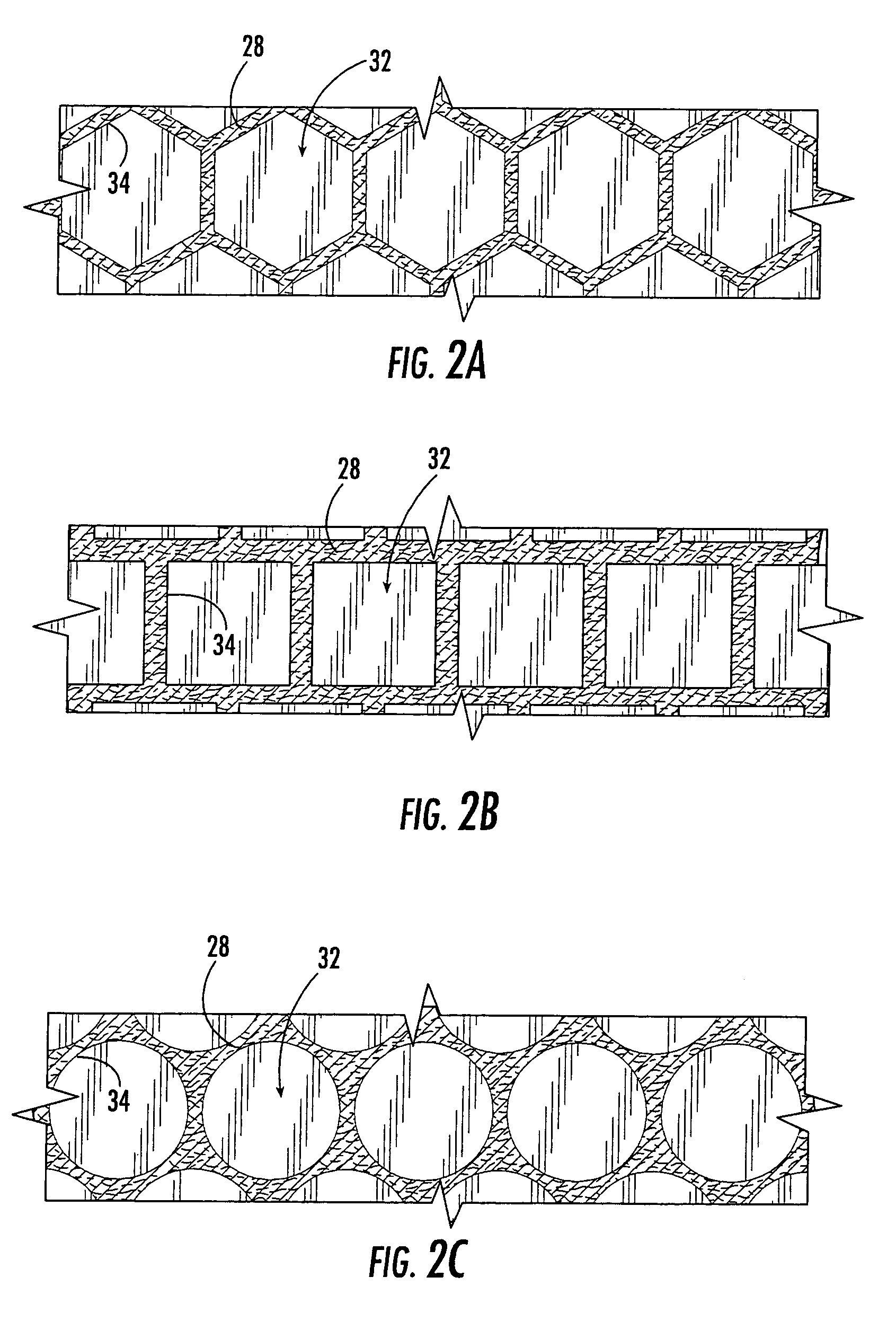Reinforced fiber panel and method of forming same
a technology of reinforced fiber and bending stiffness, which is applied in the field of three-dimensional structural products, can solve the problems of affecting the affecting the bending strength of the panel, so as to enhance the bending stiffness of the panel and enhance the bending stiffness. the effect of the panel and the structure is not affected by moisture, and the quality of the wood adds to the cost of the pall
- Summary
- Abstract
- Description
- Claims
- Application Information
AI Technical Summary
Benefits of technology
Problems solved by technology
Method used
Image
Examples
Embodiment Construction
[0023]The present inventions now will be described more fully hereinafter with reference to the accompanying drawings, in which some, but not all embodiments of the invention are shown. Indeed, these inventions may be embodied in many different forms and should not be construed as limited to the embodiments set forth herein; rather, these embodiments are provided so that this disclosure will satisfy applicable legal requirements. Like numbers refer to like elements throughout.
[0024]Turning now to the figures, FIGS. 1 and 2 show a reinforced support structure or panel 20 according to one embodiment of the present invention. The panel 20 is useful for supporting objects and transporting goods, although other uses and benefits are contemplated by the present invention. As shown, the panel 20 has opposing ends 21 and sidewalls 23. The thickness of the panel 20 is defined as H1, and is determined by the distance between a top or interior side 22 and a bottom or exterior side 24 of a face...
PUM
 Login to View More
Login to View More Abstract
Description
Claims
Application Information
 Login to View More
Login to View More - R&D
- Intellectual Property
- Life Sciences
- Materials
- Tech Scout
- Unparalleled Data Quality
- Higher Quality Content
- 60% Fewer Hallucinations
Browse by: Latest US Patents, China's latest patents, Technical Efficacy Thesaurus, Application Domain, Technology Topic, Popular Technical Reports.
© 2025 PatSnap. All rights reserved.Legal|Privacy policy|Modern Slavery Act Transparency Statement|Sitemap|About US| Contact US: help@patsnap.com



